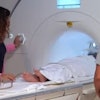The team, led by Dr. Sarah Bahouth, theorized that double reading skeletal surveys would reduce the number of fractures found on follow-up exams in cases of suspected nonaccidental trauma in children. To test the hypothesis, the researchers double read all skeletal surveys performed at their institution from February 2013 to March 2015, with secondary interpretations performed within 72 hours of the initial read.
In all, 1,056 initial skeletal surveys were performed, with 293 follow-up studies. Among the cases with follow-up exams, primary and secondary interpretations of the initial exams were concordant in 90%, with follow-up exams showing additional fractures in 12% and no additional fractures in 88%.
In 10% of the 293 initial skeletal surveys, fractures were identified on the secondary double-read interpretation that were not found on the primary interpretation. Follow-up skeletal surveys revealed additional fractures not seen on the primary or secondary interpretations in 17%.
The secondary interpretations had a marginal diagnostic yield of 10%, while the follow-up skeletal surveys for initial exams that had not been double read had a marginal diagnostic yield of 13%, a difference that was not statistically significant.
The lack of a statistically significant difference in diagnostic yield between the two techniques indicates that double reading initial skeletal surveys could reduce the need for follow-up exams, the researchers concluded. They recommended additional studies to validate the findings.


















